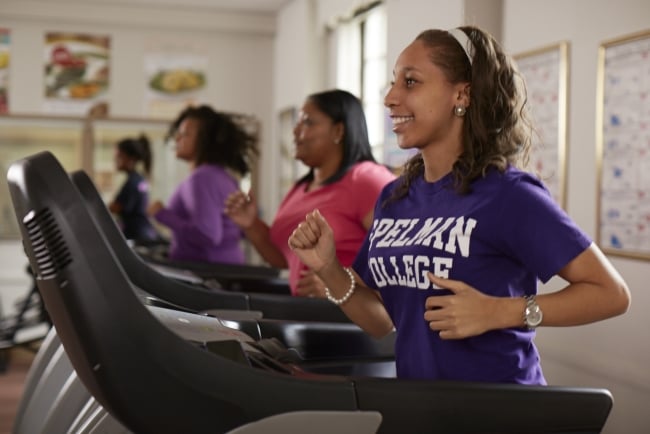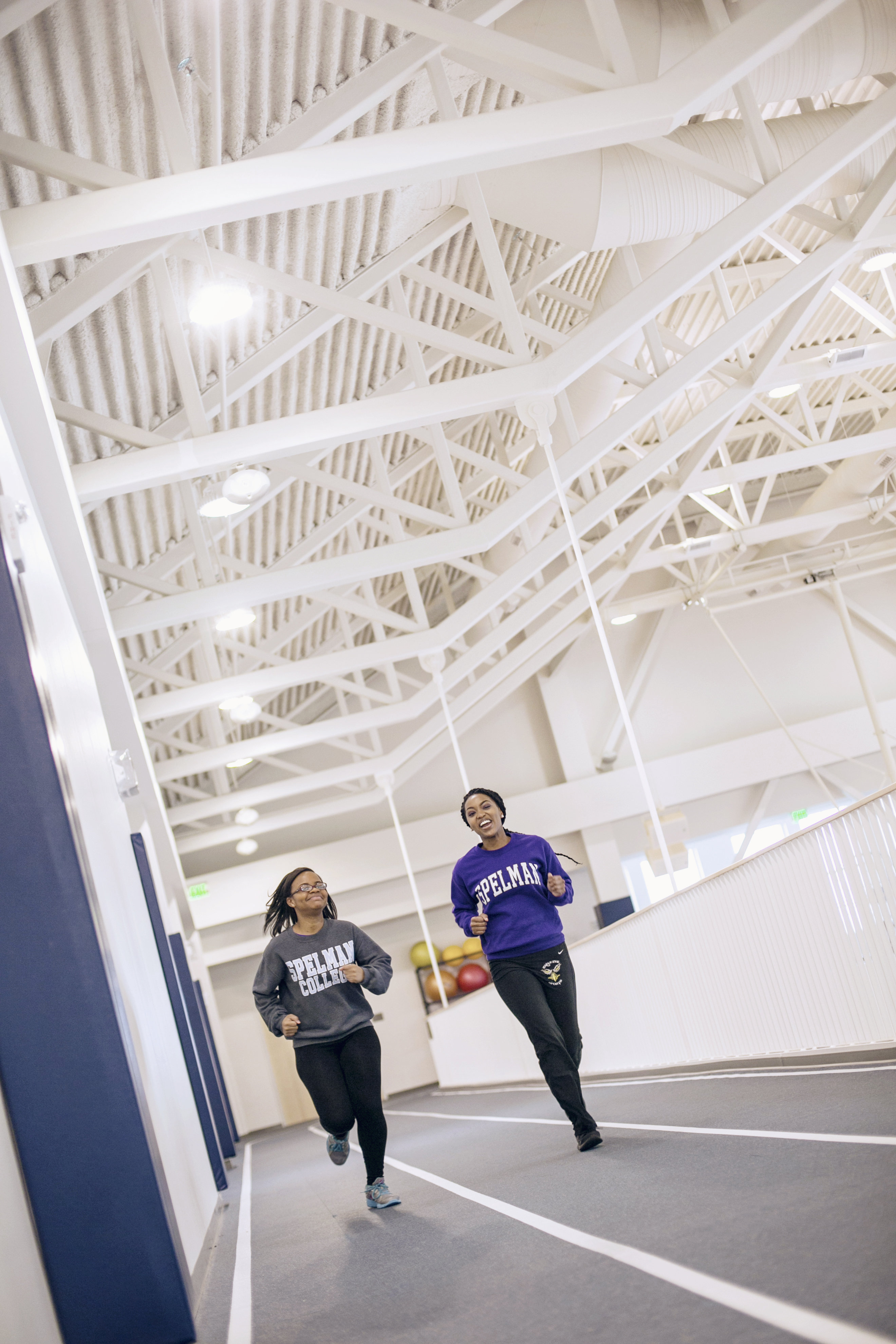You have /5 articles left.
Sign up for a free account or log in.

Mandatory wellness courses encourage a healthy lifestyle among Spelman students.
SPELMAN UNIVERSITY
In 2015, Spelman College in Atlanta implemented a mandatory two-course wellness program into its curriculum, prioritizing students’ physical well-being and educating them on the importance of fitness and healthy eating.
Now, Spelman administrators see the program as a benefit to both its campus community and the generational health and wellness of the African American community.
“Infusing it as a part of the curriculum really provides an opportunity for that early intervention that is, you know, sometimes necessary for young people,” vice president of student affairs Darryl Holloman says.
Getting moving: Administrators at Spelman recognized that students were negatively impacted by unhealthy diet choices and a lack of movement and decided to make wellness courses a requirement. A campus health clinic survey also found 30 to 40 percent of Spelman students had some level of health disparity, with the most common being diabetes, asthma and sickle cell anemia.
“It really came about as an opportunity to begin to address health disparities within the African American community to ensure healthy lifestyles and choices,” Holloman says.
Spelman’s definition of student success also hinges on a learner’s feelings of community, belonging and wellness.
“If our students feel a sense of wellness, that they are able to get the right amount of exercise, the right amount of spiritual and mental balance and equilibrium that they stay, that leads to our retention efforts. I think it’s a critical component of that,” Holloman says.
Hitting the gym: Course choices include boxing, cardio conditioning, tai chi, tennis, walking and jogging, swimming, self-defense, cycling, and yoga.
Yoga, cycling, boxing and self-defense are the most popular courses, Holloman says. “I think that the yoga and spin classes are popular, really, because people are looking for this balance in their lives,” he adds. “Our contemporary college students now are so inundated with so many competing things, they’re just looking for moments to just have that mental relaxation.”
Courses that administrators continue to push are beginning and intermediate swimming. They are so important, in fact, that they’ve been considered in strategic planning at the institutional level.
Study: African Americans Missing From Pools
A 2017 survey from the USA Swimming Foundation found 64 percent of African American children have little to no swimming ability and 65 percent of African American children would like to swim more than they do.
In turn, African American children and their parents are three times more fearful of drowning, compared to white children and parents.
“We wanted the community to really embed themselves in the idea of swimming,” Holloman says.
Part of this is a socioeconomic gap, Hollman explains. For students coming from urban areas, pool access can be limited and expensive.
Spelman administrators saw value in investing in their students’ swimming talents as a benefit to future generations, as there is a connection between a parent’s swimming ability and their child’s skill level. USA Swim also provided a $5,000 grant to start a competitive swim team at Spelman.
High-impact activities: The wellness courses have taken on a new meaning over the years, Holloman says. “Wellness is not just about your physical health—it’s also about your mental health, it’s about your spiritual health for some. So we are working to make sure that there’s a more holistic approach to this.”

Spelman University
The Wellness Center has connected to the dean of the chapel and to the counseling center to further promote all dimensions of wellness for students.
The courses are popular with students, and student voices continue to lead conversations around physical well-being on campus, like the healthiness of dining hall food, Holloman says.
Physical education has even impacted personnel at Spelman. A swimming group, called Aqua Divas Water Aerobics, teaches water aerobics to hip-hop and R&B music for swimmers of all levels, including staff.
Including physical education as a graduation requirement means the wellness courses are continually reviewed with accreditation, as well.
Looking ahead, Spelman plans to hire a director of intramural sports, hoping to grow physical activity further at the college. The intramural program will launch officially in the fall, with potential to grow into club and maybe even varsity sports, Holloman says.
If your student success program has a unique feature or twist that you believe is worth modeling, we’d like to know about it. Click here to submit.




